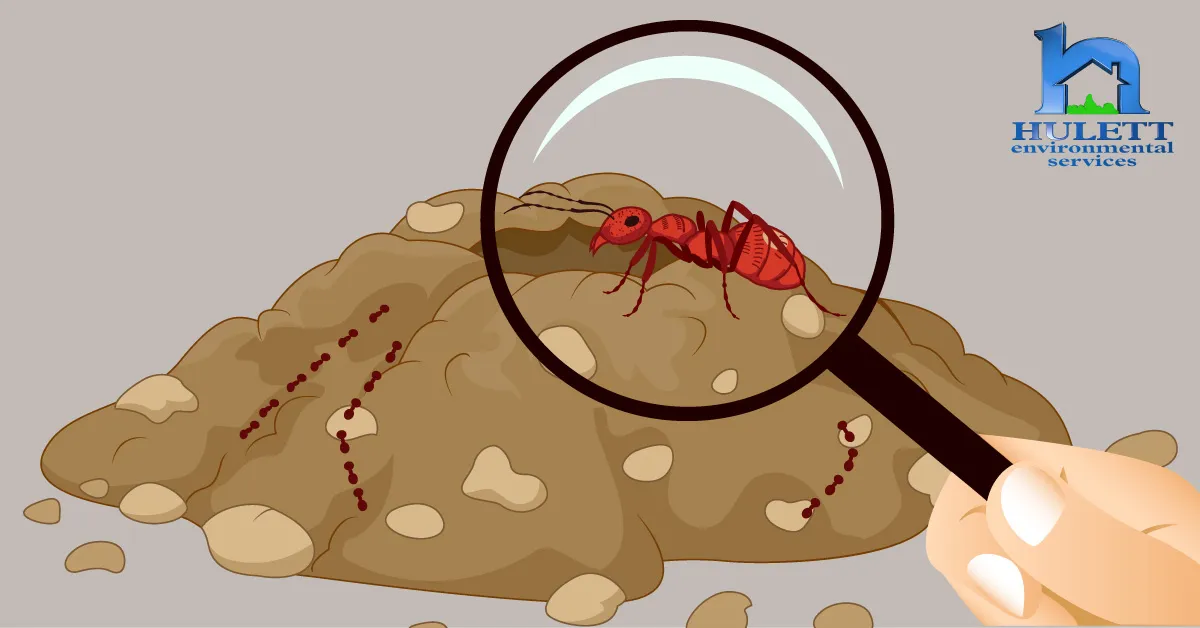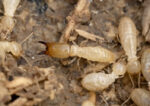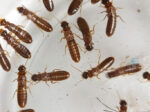
Ant Spotlight: Fire Ants
As South Florida homeowners can attest, red fire ants are capable of turning outdoor athletic events, picnics and yard work activities into unpleasant, painful scenarios. There’s really no mistaking, “what just happened?” when people and animals accidentally disturb fire ant nests. When threatened, red fire ants in South Florida do not play. With their powerful jaws, they attach to their intruders and release venom through their stingers. A strong burning sensation lasting for several hours is followed by white pustules forming at the bite sites, giving way to extreme itching that can result in secondary infections. Fire ants attack in numbers and can sting their victim multiple times, which can result in severe allergic reactions that require immediate medical attention.
Where do red fire ants come from?
With around 300 fire ant species, making life uncomfortable to miserable for someone, somewhere in the world, probably the most notorious ants in South Florida, red invasive fire ants, a.k.a. RIFA. They originally arrived in the US in the 1930s, most likely as accidental stowaways on a South American cargo ship that docked in Mobile, Alabama. Native to Brazil’s Amazon forests, aggressive, red fire ants soon spread throughout the southern states and parts of the southwest. Red fire ants look very similar to our native Florida fire ant.
Fire ant appearance and behavior
With red to brown abdomens and thoraxes and copper heads, fire ant workers range in size from 1/16″ to 1/4″ long, with a stinger attached to the gaster. Worker mandibles have four distinct teeth and segmented antennae that end in a two-segmented club.
Sometimes more than one queen
Enormous fire ant colonies usually only contain one queen but some fire ant populations do have multiple queens, sometimes up to a dozen. It seems that for whatever reason, unrelated queens and daughters are allowed to move in and set up shop in another queen’s territory. Invasive fire ant workers can forage up to one hundred feet in search of food and will recruit other colony members to help bring a large store of food back to their nests.
Not picky eaters, fire ants’ diverse appetites enhance their resilient factor
Omnivores, fire ants prefer proteins, such and insects and meats but will also eat fruits, sugars, syrups and other carbohydrates, as well as grease, lard, seed oils and other fatty foods. Workers will forage for food more than one hundred feet from their nests. Foraging by day, as well as by night, when a large food source is found, these ants recruit other workers to help take the food back to the colony.
Fire ant habitats
Like our native tropical fire ants, the more aggressive and invasive RIFAs build large nests in the ground, near moist areas, generally in grassy, sunny areas. Ballparks and open-air stadiums, playgrounds and any open lawn areas in community parks or in your backyard make ideal RIFA nesting areas. Marked by distinctive dirt mounds in open areas that might be easy to avoid, red fire ants also build not-so-visible nests:
- Under patio tiles, cracks in pavement and in small crevices in buildings
- Around landscaping shrubs and trees
- In rotting logs and around tree stumps
- In utility housing or boxes and inside electrical equipment, causing short circuiting to occur
Fire Ant Control
Large fire ant colonies not only create threats to humans, as well as to pets and livestock, they harvest seeds that cause considerable damage to crops and wreak havoc on landscaped yards, as well. Many products and methods have been used to eliminate fire ants from South Florida properties. These treatments may reduce populations for a while but unless these treatments affect the colony’s queen, the colony infests other areas nearby. In South America, red fire ants have natural predators, plus parasites and viruses that keep fire ant populations in check and currently, scientists are exploring the idea of introducing these agents in the US. Recently, scientists discovered that crazy ants, from the same part of the world as red fire ants secrete a substance that neutralizes fire ant venom. Crazy ants are, in fact, displacing some fire ant colonies in South Florida. While biological solutions sound like a good idea, the cure could be worse than the disease, with crazy ant infestations causing more danger and damage than fire ants. What’s the most reliable thing to do when you notice a fire ant mound in your yard? Just call Hulett! Our trained team will utilize a pest management system that is custom to your home, possibly including granular bait products with additional applications, as needed. With Hulett, not only will your fire ant problem get taken care of but we also offer a money back guarantee should you continue to have a fire ant problem. If you’ve got fire ants, just call Hulett! Get your pest problem taken care of today! Same day service available.



